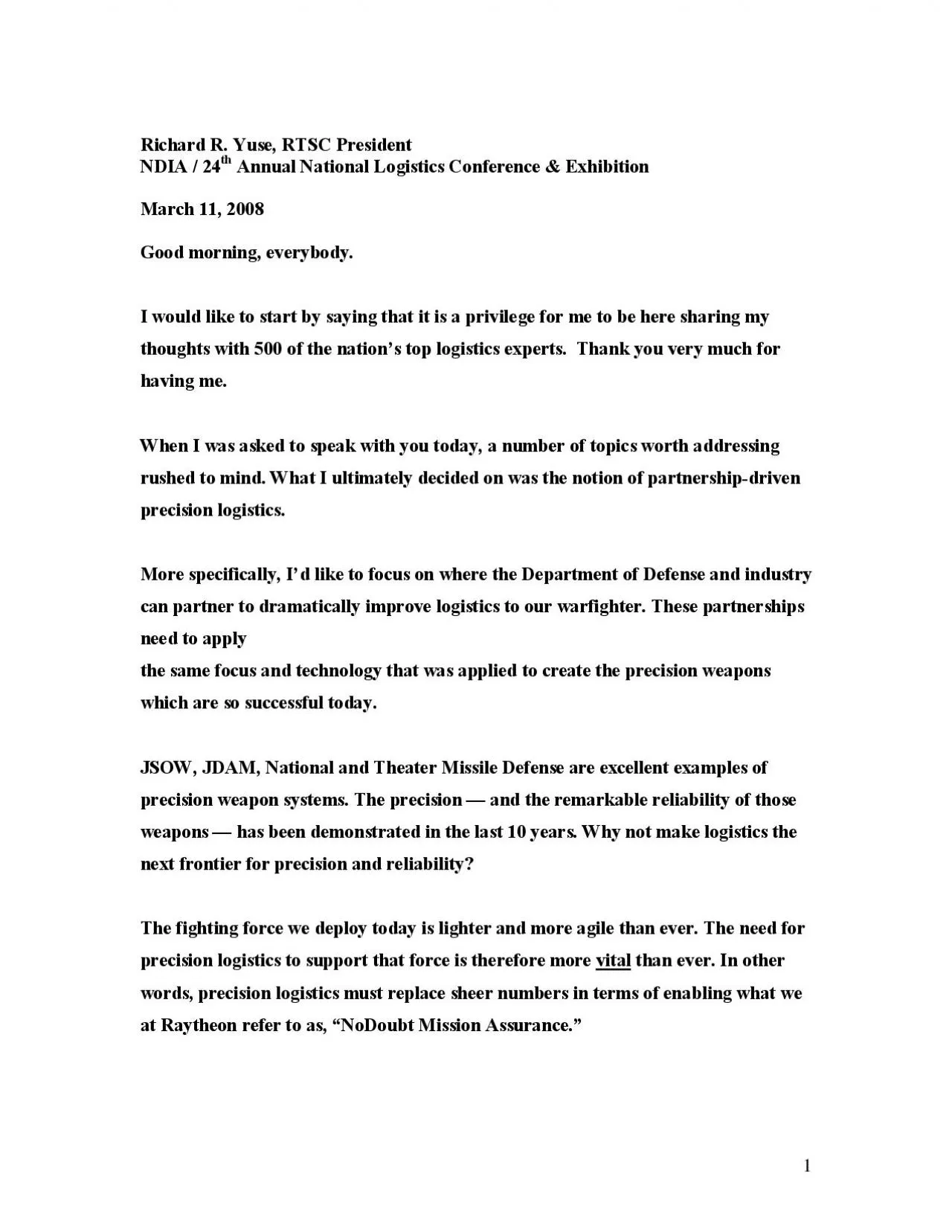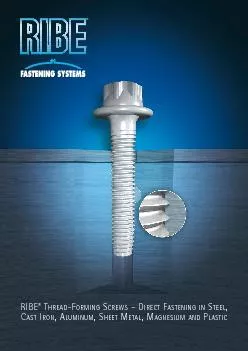PDF-Richard R Yuse RTSC President
Author : sophia2 | Published Date : 2021-06-30
NDIA 24 th Annual National Logistics Conference Exhibition March 11 2008 Good morning everybody I would like to start by saying that it isthoughts with 500 of
Presentation Embed Code
Download Presentation
Download Presentation The PPT/PDF document "Richard R Yuse RTSC President" is the property of its rightful owner. Permission is granted to download and print the materials on this website for personal, non-commercial use only, and to display it on your personal computer provided you do not modify the materials and that you retain all copyright notices contained in the materials. By downloading content from our website, you accept the terms of this agreement.
Richard R Yuse RTSC President: Transcript
Download Rules Of Document
"Richard R Yuse RTSC President"The content belongs to its owner. You may download and print it for personal use, without modification, and keep all copyright notices. By downloading, you agree to these terms.
Related Documents














